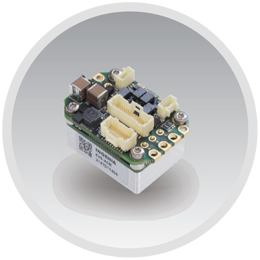The robotics revolution is currently in effect and surgical robotics platforms are being widely adopted worldwide due to the advantages of minimally invasive procedures. Celera Motion’s Ingenia servo drives deliver precision, small size, efficiency, and customization flexibility, enabling a competitive advantage to surgical robot OEMs.
The Challenge
The robotics revolution is currently in effect and surgical robotics platforms are being widely adopted worldwide due to the immense advantages of minimally invasive procedures. These procedures are conducted with surgical robots, guided by surgeons from control consoles. Improving the accuracy of surgical procedures and minimizing risks for the patients is top priority. Robotic platforms must be extremely precise and reliable. Compact size is also critical to reduce overall system weight, improving efficiency.
Examples of surgical robotic and medical device assemblies include:
- Surgical robotic joints
- End-effector tools
- Instrument drive units for surgical systems
- Haptics for robot assisted surgery
- Endoscopic tooling & vision systems
- Patient positioning systems
The Solution
Celera Motion’s Ingenia servo drives are used in surgical robotics for minimally invasive surgery. The ultra-low EtherCAT latency combined with very small size enables the robot to be precise, compact, and efficient – key factors of success. In haptic robotic systems weight is critical. A small, lightweight servo drive can contribute to reducing total system weight.
Custom algorithms, developed by the customer specifically for the application, can be embedded in the drive microprocessor, enabling OEMs to create a performance advantage. These algorithms can be as simple as a specific PID, or as complex as vibration, cogging, damping compensation or gain scheduling. These are a few key features that address the needs of the surgical robotics market, enabling a winning platform.
The Benefit
In minimally invasive surgery, movement of the surgeon’s console must be instantly replicated in the robot without lag in the system. Celera Motion’s Ingenia servo drives minimize lag with the lowest latencies possible in EtherCAT communications (2 EtherCAT cycles). The combination of very low standby power consumption (1.2 W), and high efficiency (up to 98%), ensures minimal heat dissipation within the joint.
Multi-layer, high density design facilitates powerful, state-of-the-art, thermally optimized circuitry. This highly compact integration allows multi-axis robots to be small, modular, and minimizes wiring.
The precision, size, efficiency, and customization flexibility of Celera Motion’s Ingenia servo drives deliver a competitive advantage to surgical robot OEMs.





